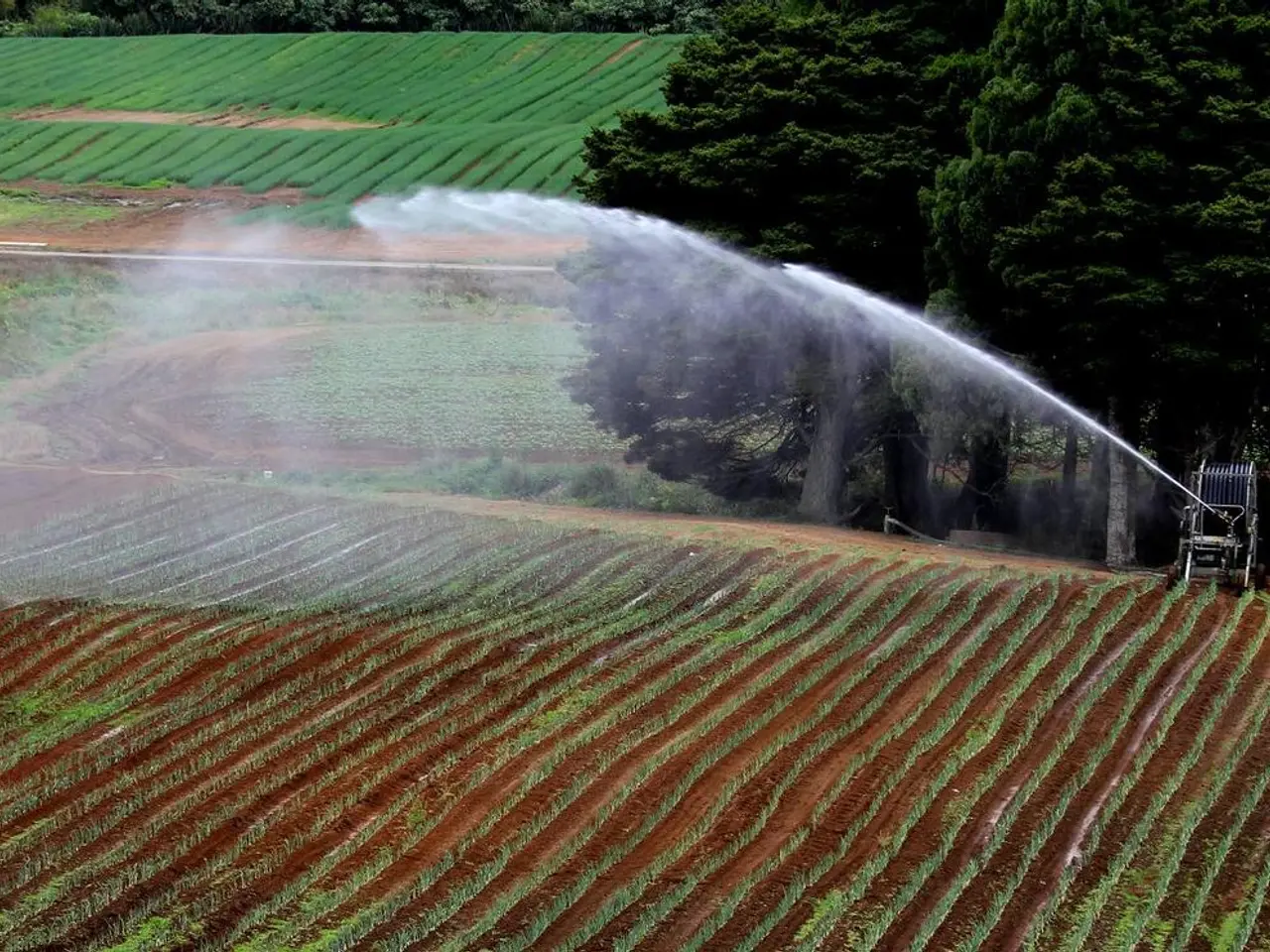Rapid Expansion of Agrivoltaics Industry Anticipated at a 11.3% Compound Annual Growth Rate by 2034
The agrivoltaics market is currently thriving, with a valuation of approximately USD 4.7 billion in 2025. This growth is expected to continue, reaching between USD 8.3 billion by 2032 and potentially even USD 13.88 billion by 2034, according to various forecasts[1][2][3]. The market's expansion is driven by the dual benefits of integrating solar power generation with agricultural activities on the same land, maximising land productivity and addressing both energy and food production needs[1][4].
Technological advancements and supportive government policies, including subsidies and research initiatives, are further fuelling market growth[1][2]. In Europe, countries like France and Germany are leading the way, with well-established policies, pilot programs, and incentives specifically designed to support agrivoltaics. For instance, France offers dedicated tenders prioritizing crop-based agrivoltaics, while Germany integrates agrivoltaics into its energy strategy with ongoing government investment and research[2].
Other European countries, such as Italy and the Netherlands, are also showing growing interest, with increasing political attention and funding to explore agrivoltaics across different farming practices[2]. The United Kingdom is in the early stages of market development but is experiencing rising interest as traditional solar farm expansion encounters land access barriers[2].
Outside Europe, notable projects in regions with agricultural economies and renewable energy goals demonstrate the potential for agrivoltaics. For example, New Zealand has developed a large agrivoltaics farm on former dairy land[1].
In terms of plant type, overhead tilted structures dominate the global agrivoltaics market, holding a 46.1% share in 2024[5]. Fixed solar panels over crops account for a dominant 68.2% share in the market[6]. Standalone system placement leads with a 43.7% share[6].
Regarding solar panel type, opaque solar panels led the market in 2024 with a 48.5% share, while monocrystalline cells contribute 62.9% to the overall market share[7]. Companies like Agrivoltaic Solution LLC and Insolight SA are advancing modular solar designs and translucent solar panels tailored for agricultural use, focusing on crop-specific light requirements[8][9].
The agrivoltaics market offers numerous benefits beyond energy production. It reduces soil evaporation, lowering water needs for crops, especially in dry regions[10]. Agrivoltaics also creates habitats for pollinators like bees, boosting biodiversity and supporting crop pollination[11]. Furthermore, it protects crops from extreme weather like heatwaves, frost, or hail, stabilising yields in changing climates[12].
In addition to these environmental benefits, agrivoltaics also boosts crop yields and provides extra income for farmers by combining solar panels with crop farming on the same land[13]. In 2024, North America led the global agrivoltaics market with a 42.8% share, valued at USD 1.7 billion[14].
As the agrivoltaics market continues to grow, it is poised to make a significant impact on sustainable agriculture and renewable energy, offering a promising solution to the challenges of land use, food production, and energy generation.
Sources: 1. MarketsandMarkets 2. European Commission 3. Allied Market Research 4. International Renewable Energy Agency (IRENA) 5. MarketsandMarkets 6. Allied Market Research 7. MarketsandMarkets 8. Agrivoltaic Solution LLC 9. Insolight SA 10. National Renewable Energy Laboratory (NREL) 11. European Commission 12. National Renewable Energy Laboratory (NREL) 13. European Commission 14. MarketsandMarkets
- The growth of the agrivoltaics market is not limited to renewable energy and finance, as it also benefits data-and-cloud-computing by reducing soil evaporation and lowering water needs for crops, particularly in dry regions.
- With the technological advancements in solar panels, such as modular solar designs and translucent solar panels tailored for agricultural use, the renewable-energy industry is increasingly focusing on the finance side of agrivoltaics, with companies like Agrivoltaic Solution LLC and Insolight SA at the forefront.
- As the agrivoltaics industry continues to expand, benefiting renewable energy and farming practices, government policies in regions like Europe, particularly in France and Germany, and countries outside Europe, such as New Zealand, are playing a crucial role in encouraging and supporting its development for a sustainable future.




